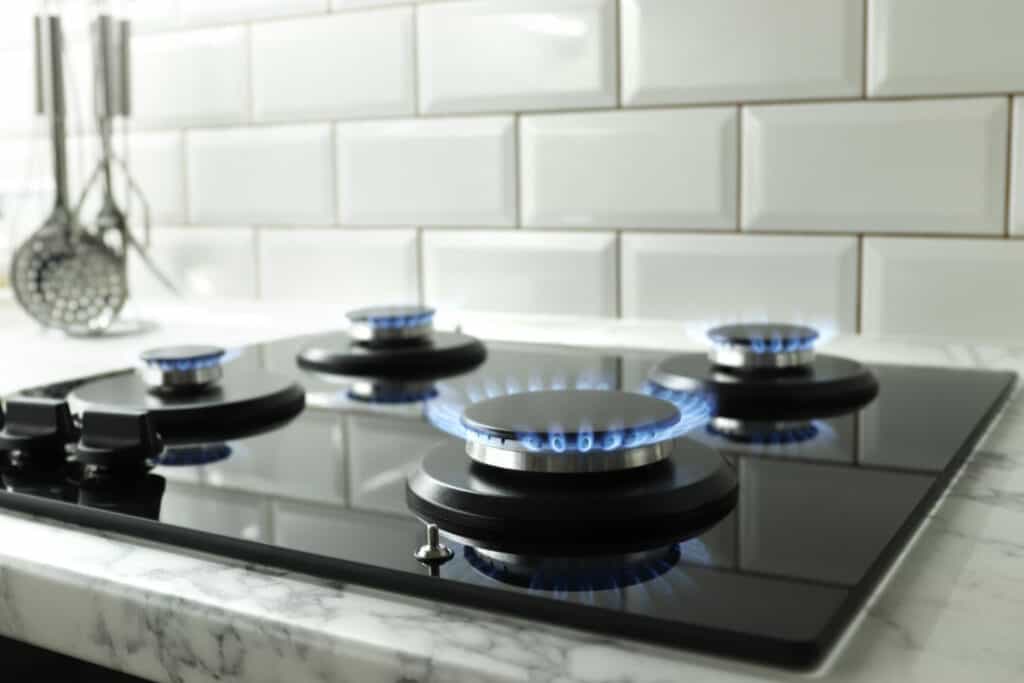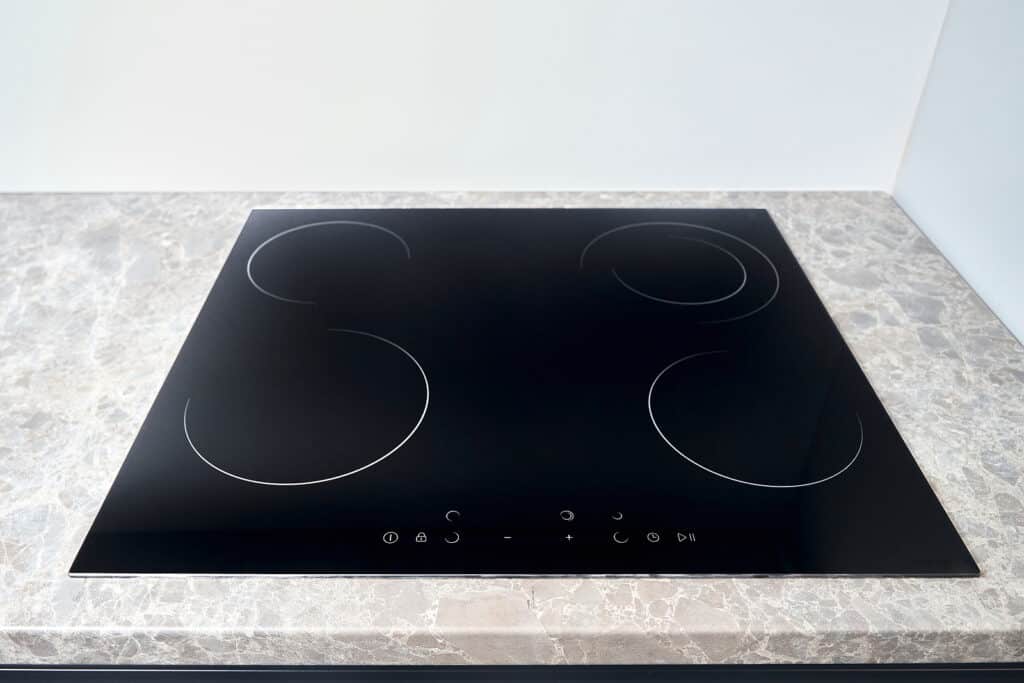Electric stove Electricity Use
Electric stoves have truly become a staple in my daily life, making meal preparation quick and convenient. However, I've also come to realize that they can be quite the energy guzzlers in my home.
As someone who's increasingly conscious of energy efficiency and our impact on the environment, I've made it a priority to learn how to make the most of my electric stove while keeping my energy bills in check and reducing my carbon footprint.
So, in this guide, I'd like to share what I've discovered about electric stove electricity consumption and the practical steps I've taken to save energy and contribute to a more sustainable future.
Understanding Electric Stove Energy Consumption
To make the most of your electric stove while conserving energy, it's crucial to delve deeper into how it utilizes electricity. Electric stoves operate by employing metal coils or ceramic elements to generate the heat necessary for cooking. Here's a more comprehensive look at the key factors contributing to energy consumption:
Wattage Variation
Electric stoves are available in a range of wattages, typically spanning from 1,000 to 3,000 watts per burner. The wattage directly correlates with electricity consumption; higher wattage means greater energy use. It's worth noting that modern stoves often feature multiple burners, compounding the impact on overall energy consumption.
Cooking Duration
The amount of time your stove is in operation directly affects its electricity consumption. Cooking duration is contingent upon factors such as the dish being prepared, the chosen cooking method, and the stove's temperature setting. Learning to optimize cooking times is instrumental in reducing energy consumption.
Cookware Selection Matters
The choice of cookware you use can significantly influence energy efficiency. Cookware with flat bottoms and well-fitting lids distribute heat evenly, leading to reduced cooking times and less energy required to complete the task.
Temperature Settings for Precision
Electric stoves offer a range of temperature settings, enabling precise control over heat output. Using the appropriate temperature setting for your specific cooking needs can yield energy savings. For instance, simmering at a lower heat setting consumes less electricity compared to boiling at a high setting.

Tips to Optimize Electric Stove Electricity Use
Understanding how electric stoves consume electricity is crucial for making informed decisions about energy usage. Here are some comprehensive tips to help you optimize the energy efficiency of your electric stove:
- Select Energy-Efficient Cookware: Invest in high-quality cookware that conducts heat efficiently. Look for pots and pans with thick bottoms and lids made of materials like stainless steel or copper. These choices can significantly reduce cooking time and energy consumption.
- Match Pot Size to Burner Size: Ensuring that your cookware matches the size of the burner is essential for efficient heat transfer. When pots are much smaller than the burner, heat escapes around the sides, wasting energy. Use the appropriate pot size for each burner.
- Choose Flat-Bottomed Cookware: Cookware with flat bottoms provides better contact with the burner, improving heat transfer and reducing cooking time. This simple adjustment can result in substantial energy savings over time.
- Utilize Lids While Cooking: The use of lids on pots and pans is a simple yet effective method to trap heat. This allows you to cook at lower temperatures while retaining heat, ultimately reducing energy consumption.
- Opt for Smaller Appliances: When preparing smaller meals or side dishes, consider using smaller electric appliances such as toaster ovens, microwave ovens, or induction cookers. These appliances are generally more energy-efficient than full-sized stoves and are suitable for quick cooking tasks.
- Preheat Wisely: While preheating is necessary for some recipes, it may not be required for others. Follow your recipe's instructions, and when possible, reduce preheating time or skip it altogether to save energy.
- Embrace Batch Cooking: Preparing larger quantities of food and storing leftovers for future meals can reduce the frequency of using your electric stove. Reheating leftovers typically consumes less electricity than cooking from scratch.
- Plan Your Meals: Meal planning can help you avoid last-minute cooking decisions that may lead to longer stove usage. It also allows you to use your stove more efficiently by preparing multiple dishes simultaneously, optimizing energy use.
- Regularly Clean Burners and Reflectors: Maintaining clean burners and reflectors is essential for efficient heat transfer. Dirty or greasy surfaces can hinder heat distribution, resulting in longer cooking times and increased energy consumption. Clean these components regularly.
- Switch to Energy-Efficient Appliances: When considering a new electric stove power consumption, prioritize models with energy-efficient features. Induction cooktops, for example, are renowned for their energy efficiency, as they heat cookware directly and quickly.
Monitoring and Reducing Energy Consumption
Effective energy management involves both implementing energy-saving tips and actively monitoring and managing your energy consumption. To ensure that your efforts yield tangible results, it's crucial to employ monitoring techniques and set specific energy-saving goals. Here's a more detailed breakdown of how you can accomplish this:
Invest in a Power Monitor or Smart Plug
To gain insight into your electric stove's energy consumption, consider investing in a power monitor or a smart plug specifically designed for measuring electricity usage. By attaching one of these devices to your stove, you can precisely track the amount of electricity consumed during your cooking sessions. This real-time data is invaluable in understanding your energy consumption patterns.
Analyze Your Energy Consumption Data
Once you have access to data on your stove's energy usage, take the time to analyze it. Identify peak usage times, specific cooking habits, and any energy-intensive cooking techniques. This analysis can reveal opportunities for improvement and help you pinpoint areas where you can make more substantial energy-saving changes.
Set Clear Energy-Saving Goals
With a solid understanding of your energy consumption patterns, establish clear and achievable energy-saving goals. These goals should be specific, measurable, and time-bound. For example, you might aim to reduce your monthly much electricity does consumption while cooking by a certain percentage within the next six months.
Implement Energy-Efficient Practices
Armed with your energy-saving goals and consumption data, actively implement energy-efficient cooking practices. This might involve adjusting your cooking techniques, optimizing your gas and electric ovens stoves and ranges settings, or using energy-efficient cookware. Continuously track your progress and make adjustments as needed to stay on course with your goals.
Regularly Monitor and Adjust
Energy consumption can fluctuate due to various factors, such as seasonal changes or changes in your cooking habits. Regularly monitor your energy usage to ensure you're staying on track with your goals. If you notice deviations or spikes in consumption, investigate the causes and make necessary adjustments to maintain energy efficiency.
Celebrate Milestones
Celebrate your achievements when you meet energy-saving milestones. Recognizing your progress can provide motivation to continue reducing energy consumption and inspire others to follow suit.
Seek Professional Advice
If you encounter challenges or want to explore more advanced energy-saving strategies, consider consulting with a professional energy auditor or an appliance specialist. They can provide tailored recommendations to further optimize your energy use.
Electric stove Electricity Use FAQs
Q: How much does it cost to leave an electric stove on all day?
A: Leaving an electric stove on all day can vary in cost depending on your location and the specific stove model. On average, electric stoves consume around 2,000 to 2,500 watts per hour. If we assume an electricity rate of $0.12 per kilowatt-hour (the national average in the United States), running an electric stove continuously for 24 hours can cost between $5.76 and $7.20.
Q: Is it cheaper to use an electric stove?
A: The cost-effectiveness of using an electric stove compared to other cooking methods depends on several factors, including your local electricity rates, the energy efficiency of your stove, and the duration of use. Generally, electric stoves are considered more efficient and cost-effective than some other options like gas stoves, especially if you have a modern, energy-efficient model. However, for occasional or low-heat cooking, smaller appliances like microwaves or slow cookers may be more cost-effective.
Q: How much does it cost to run an oven for 1 hour?
A: The cost of running an electric oven for one hour varies depending on its power consumption and your electricity rates. Ovens typically consume between 2,000 and 5,000 watts per hour, with most ovens falling in the middle of this range. Assuming an electricity rate of $0.12 per kilowatt-hour, running an average oven for one hour can cost between $0.24 and $0.60.
Q: How much does it cost to run an electric oven at 350 degrees Fahrenheit?
A: The cost of running an electric oven at 350 degrees Fahrenheit for an hour depends on the oven's wattage and your electricity rates. Most ovens consume between 2,000 and 5,000 watts per hour, but the exact wattage may vary. Assuming an electricity rate of $0.12 per kilowatt-hour, running an oven at 350 degrees Fahrenheit for an hour can cost between $0.24 and $0.60. It's important to note that preheating the oven and cooking times can also affect the overall cost, so actual costs may vary.
Conclusion
In conclusion, my journey to understand and optimize the electricity consumption of my electric stove has been both enlightening and rewarding. As someone increasingly conscious of the environment and energy efficiency, I've learned that even small changes in our cooking habits can make a significant impact. By investing in energy-efficient cookware, matching pot sizes to burners, and embracing the use of lids, I've not only reduced my energy bills but also contributed to a more sustainable future.
Monitoring my energy consumption and setting clear goals provided me with a roadmap to success, and celebrating each milestone along the way has been a source of motivation. I've come to realize that responsible energy usage in the kitchen isn't just about saving money; it's about being a responsible steward of our planet. So, as I continue this journey, I encourage others to join in, knowing that together, we can make a positive difference, one meal at a time, while nurturing our environment and preserving our resources for generations to come.

